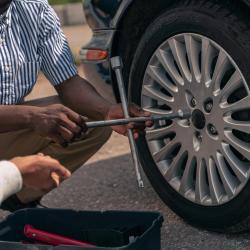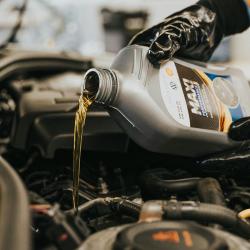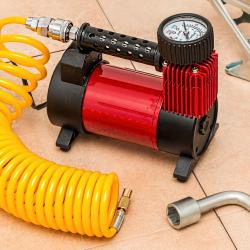How to Handle Hydroplaning: Prevention and Safety Measures
Driving in wet conditions poses a unique set of challenges and risks, one of which is hydroplaning. This phenomenon occurs when a vehicle's tires lose contact with the road surface due to a layer of water, leading to a loss of traction and control. Hydroplaning can be a terrifying experience, especially for new drivers, but understanding how to prevent and handle it can significantly reduce the risk and keep you safe on the road.
Understanding Hydroplaning
Hydroplaning typically occurs during heavy rain when water on the road surface doesn’t drain away quickly enough. Depending on factors like speed, tire condition, and road texture, a vehicle may begin to hydroplane at speeds as low as 35 mph. When this happens, the tires ride on top of the water rather than maintaining contact with the road, resulting in reduced steering, braking, and overall vehicle control.
Prevention Measures
-
Maintain Proper Tire Tread and Pressure:
- Regularly check your tires to ensure they have adequate tread depth. Worn-out tires are more likely to hydroplane.
- Ensure your tires are inflated to the recommended pressure. Under-inflated tires can lead to decreased traction.
-
Reduce Speed in Wet Conditions:
- Slow down when driving in the rain. The faster you drive, the more difficult it is for your tires to disperse water effectively.
- Avoid using cruise control in heavy rain to maintain better manual control over acceleration and braking.
-
Avoid Puddles and Standing Water:
- Steer clear of large puddles and areas where water tends to accumulate. If you can’t avoid them, drive through slowly and cautiously.
- Stick to the center lanes on highways, where water is less likely to pool.
-
Regular Vehicle Maintenance:
- Ensure your vehicle’s brakes, suspension, and alignment are in good working condition, as these systems contribute to overall road handling.
- Replace windshield wipers regularly to maintain clear visibility during rainstorms.
-
Choose the Right Tires:
- Consider investing in high-quality, all-weather or rain-specific tires designed to perform better in wet conditions. These typically have tread patterns that help channel water away from the tire.
Safety Measures During Hydroplaning
-
Stay Calm:
- Avoid any sudden movements. Panicking can lead to overcorrection, which may exacerbate the situation.
-
Ease Off the Accelerator:
- Gently lift your foot off the gas pedal to reduce speed gradually. Do not slam on the brakes, as this can cause further loss of control.
-
Steer Straight:
- Keep the steering wheel steady and aimed in the direction you want to go. Sudden turns can cause the vehicle to skid.
-
Avoid Braking:
- If you need to brake, do so gently with a light pumping action if you don’t have anti-lock brakes (ABS). If you have ABS, apply steady pressure to the brake pedal.
-
Wait for Traction to Return:
- As you slow down and the tires regain contact with the road, gently regain control of your vehicle.
Conclusion
Hydroplaning is a frightening experience, but by taking proactive measures, you can significantly decrease your risk. Regular vehicle maintenance, mindful driving habits, and understanding how to react in the event of hydroplaning can make all the difference in ensuring your safety. Remember, when it comes to driving in wet conditions, caution and preparedness are your best tools for staying safe on the road.






















